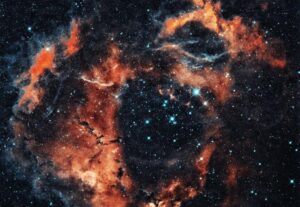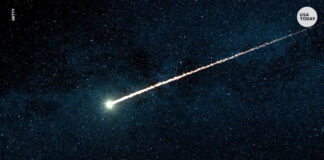JULY 3, 2023

(Photo by Tengyart on Unsplash )
By Mark Waghorn via SWNS
Einstein’s Big Bang theory may have been proven after astronomers peered 12.7 billion years back in time.
They found the universe was moving five times slower than it is today, showing it really did have a beginning.
The international team used quasars – beams fueled by supermassive black holes – as clocks. They are the most powerful known objects.
Lead author Professor Geraint Lewis, of Sydney University in Australia, said: “Looking back to a time when the universe was just over a billion years old, we see time appearing to flow five times slower.
“If you were there, in this infant universe, one second would seem like one second – but from our position, more than 12 billion years into the future, that early time appears to drag.”
The Big Bang is grounded in Einstein’s general theory of relativity.
The German physicist reckoned the universe started in a dense mass of energy that exploded and has been spreading faster ever since.
It means we should observe the distant – and hence ancient – cosmos running much slower than now.
The ground-breaking study, published in the journal Nature Astronomy, suggests he was right.
Lewis and Dr. Brendon Brewer, of Auckland University in New Zealand, used observations of nearly 200 quasars from early galaxies.
Lewis said: “Thanks to Einstein, we know that time and space are intertwined and, since the dawn of time in the singularity of the Big Bang, the universe has been expanding.
“This expansion of space means that our observations of the early universe should appear to be much slower than time flows today.
“In this paper, we have established that back to about a billion years after the Big Bang.”
The slow-motion universe had previously only been traced back to about half its age using supernovae – massive exploding stars – as ‘standard clocks’.
By observing quasars, the time horizon has been rolled back to just a tenth the age of the universe – confirming it appears to speed up.
Lewis said: “Where supernovae act like a single flash of light, making them easier to study, quasars are more complex, like an ongoing firework display.
“What we have done is unravel this firework display, showing that quasars, too, can be used as standard markers of time for the early universe.”
Combining the observations taken at different colors or wavelengths – green light, red light and into the infrared – the team ere able to standardize the ‘ticking’ of each quasar.
A statistical analysis identified the expansion of the universe imprinted on each quasar’s ticking.
Lewis said: “With these exquisite data, we were able to chart the tick of the quasar clocks, revealing the influence of expanding space.”
The results also contradict earlier studies that had failed to identify the time dilation of distant quasars.
Lewis added: “These earlier studies led people to question whether quasars are truly cosmological objects, or even if the idea of expanding space is correct.
“With these new data and analysis, however, we’ve been able to find the elusive tick of the quasars and they behave just as Einstein’s relativity predicts.”
Courtesy/Source: The post appeared first on Talker

































































































